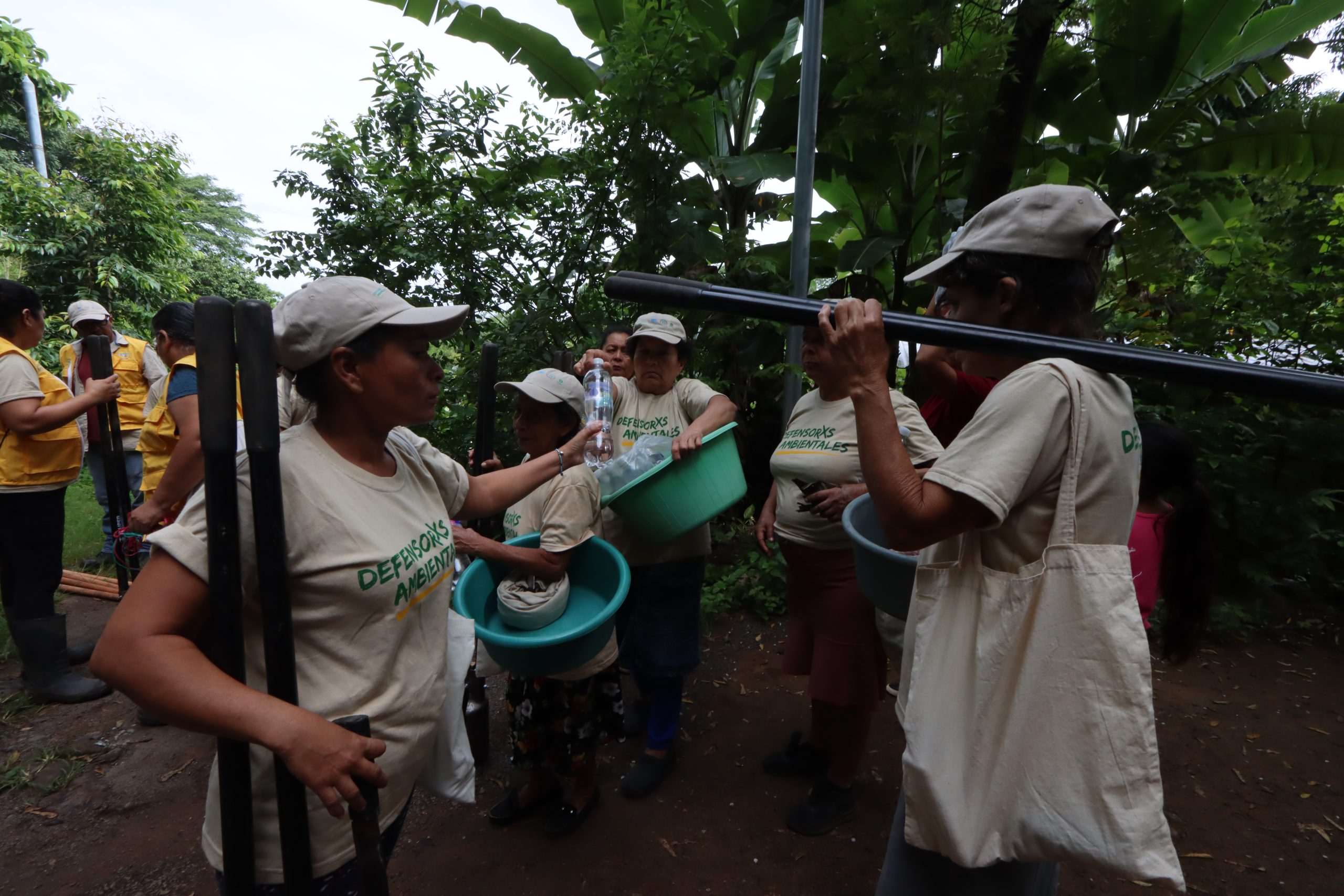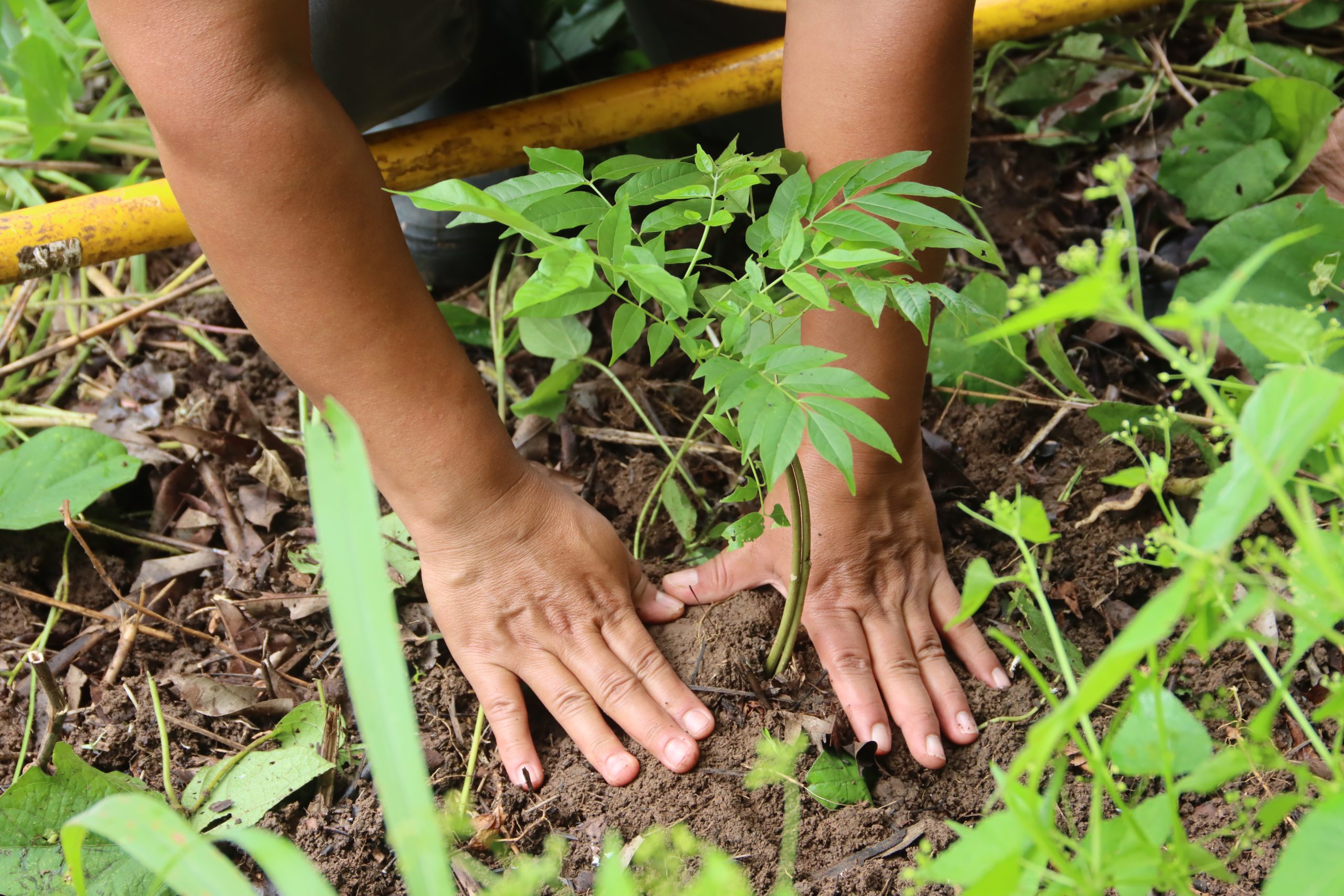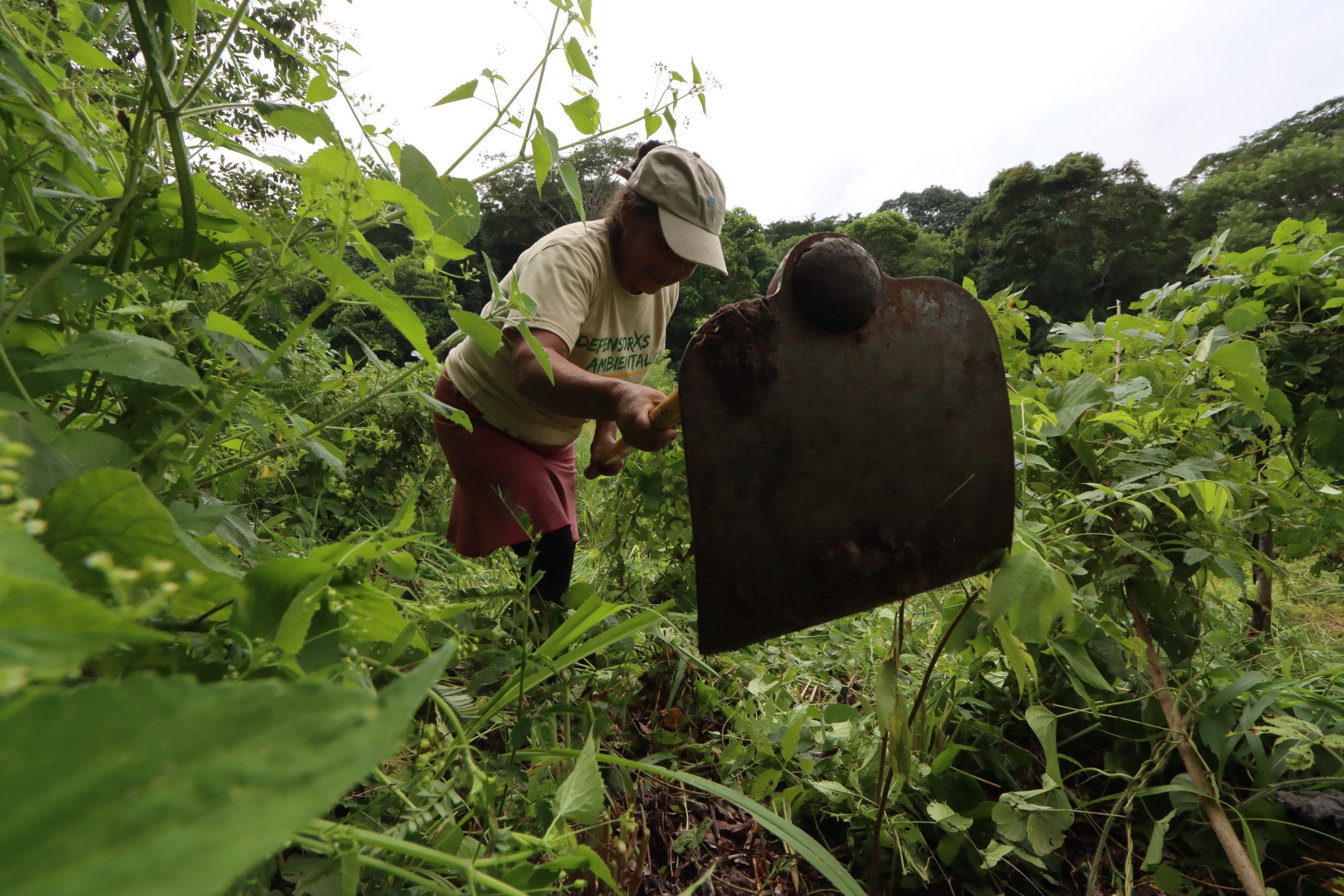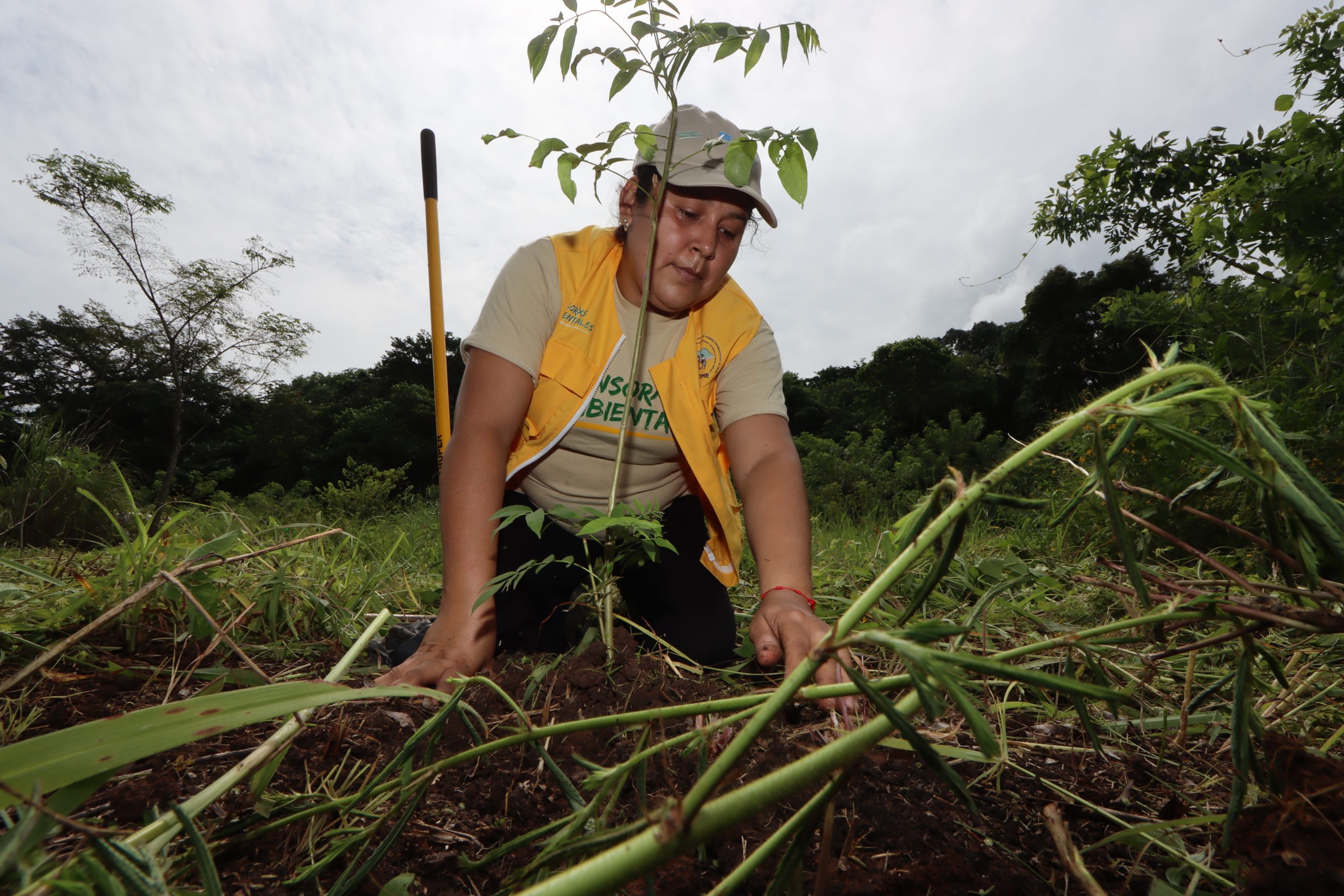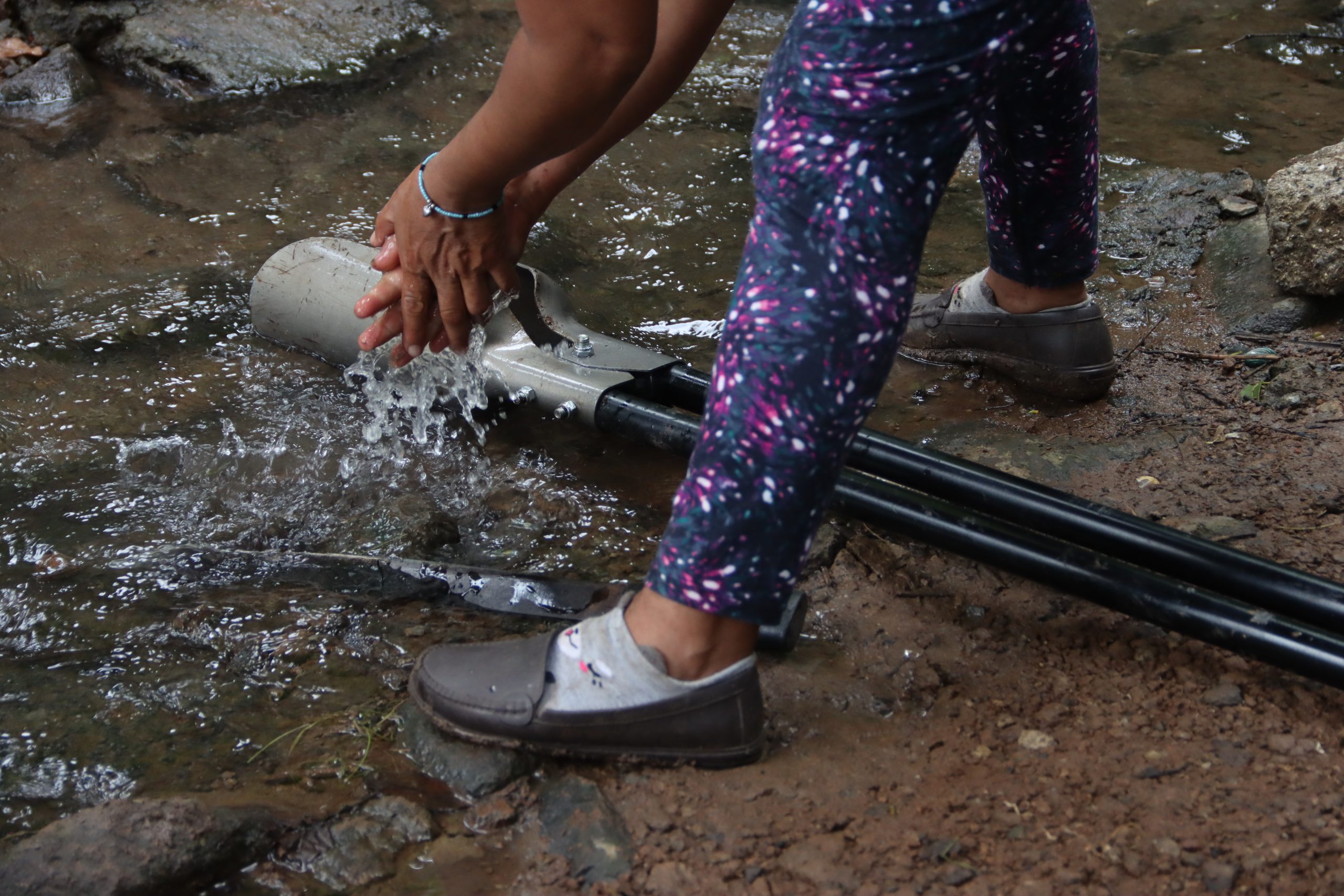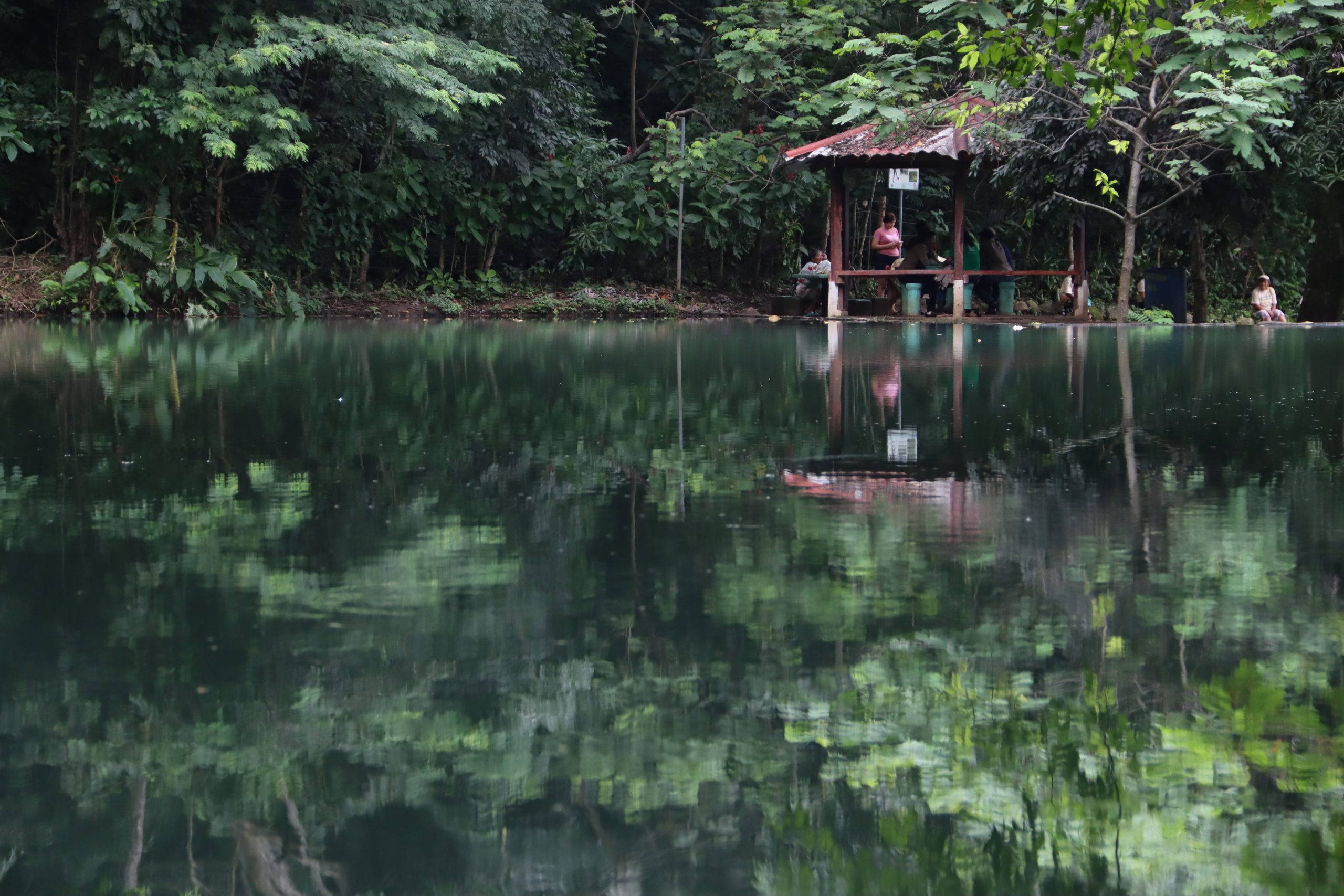In El Salvador, one in three homes does not receive water every day. But when the women of Hacienda La Labor was their only water source dry up, they managed to recover it. Journalist Wendy Urbina explains how in this video, report, and photoessay created by Proyecto Lava with one of the grants from the Central American 2024 Call from the Fund for Solutions Journalism in Latin America, an initiative of El Colectivo 506. Their story was published by Proyecto Lava on November 11, 2024 and is adapted here for co-publication on our site.
The water seemed to flow infinitely, but it dwindled day by day in 2018. The small but constant decreases went almost unnoticed by those who bathed in the depths of the community spring. But one day, the alert that the only water source in the area was drying up spread like wildfire throughout Hacienda La Labor. There was no longer enough water was no longer enough at Erika Solórzano’s house, or at her neighbors’. And before the faucets released nothing but air, they put a plan in motion.
“That’s how the tank filled up again and went back to how we had it,” she remembers.
In El Salvador, the agony of not having water at home is not a thing of the past. One in three homes does not receive water every day, according to data from the 2024 census. That’s why water scarcity appeared as the biggest problem for Salvadoran households in a survey on the human right to water by the University Institute of Public Opinion (IUDOP), part of of the Universidad Centroamericana José Simeón Cañas, or UCA, in 2023. The problem is exacerbated in rural areas, where only 66% of homes have running water.
Hacienda La Labor is located in western El Salvador, in the department of Ahuachapán, 85 kilometers from the capital. Here, a single spring supplies water for 10,000 people—and when it ran dry, 60 women joined forces to reforest terrain and help the spring recover from drought. To do this, they planted trees every winter; developed routes to conduct surveillance of the area; and developed cleanup campaigns in the surrounding forest. Among the beneficiaries are inhabitants of the villages within the hacienda, such as El Bordo, La Piedra, El Casco, La Ceiba, El Regadio, La Pista, and El Limón—as well as nearby villages such as San Lázaro, Pega Pega, and El Jabillo.
The first alarm went off when the women realized how some residents were deforesting the area.
“They began to cut down trees to plant grains, but because of that, the source began to dry out. It was dropping significantly,” says Erika Solorzano, president of ADECIME, the local women’s organization. (Its full name is the Integral Community Development Association of Women Entrepreneurs Fighting for Human, Political, Economic, Social, and Cultural Rights.)
@proyecto_lava ¿Cómo salvar un manantial de la sequía? 💦🌳 Las mujeres de la Hacienda La Labor en #Ahuachapán han encontrado una manera de salvar de la sequía a un manantial que abastece de agua a aproximadamente 10 mil personas ¡Aquí te contamos más! 👆👀 ➡️ Este reportaje se realizó con el apoyo del Fondo para el Periodismo de Soluciones en Latinoamérica, una iniciativa de El Colectivo 506. El reportaje se publicó en colaboración entre Proyecto Lava y El Colectivo 506 en noviembre del 2024. #ElSalvador #PeriodismoDeSoluciones #ProyectoLava ♬ sonido original – Proyecto Lava
But the women intervened. They knew that if they didn’t, they would lose not only the forest, but also the source of water that depended on that forest cover. The water source that was dwindling before their eyes was the only source within Hacienda La Labor’s 68 acres.
“When we saw that they were cutting that down, we said, ‘Where are we going to get water from if they throw away the entire forest?’” recalls Maura Díaz, vice president of ADECIME.
At Hacienda La Labor, water is managed through a local water board; that is, the National Administration of Aqueducts and Sewers (ANDA) does not manage water in this rural area. The water board and the municipal mayor’s office of Ahuachapán had coordinated to build pipes and pumps to supply residents with water from the spring every other day, for 40 minutes. In this way, residents of Hacienda La Labor are part of the 13.7% of the Salvadoran population that receives water every two days, according to data from the 2024 census.
Despite their limited access to water, inhabitants of the Hacienda say that they prefer to keep their water supply in the hands of the community, through the water board, rather than ANDA.
“Introducing ANDA is another hassle, because we would pay more than we do now,” explains Erika Solórzano. “Now, we pay $3. ANDA would put us on a meter. It wouldn’t be good for us.” (In April 2024, La Prensa Gráfica reported that ANDA customers “continue to report excessive charges” and that “some have accumulated debts of up to $4,000.”)
One of the reasons these women were able to save the spring was the training they’ve received. Through ADECIME, they have been able to access courses in leadership, gender, and project development. This provided tools they would go on to use to develop various community project.
Through alliances with environmental organizations, the women convinced the Ministry of Environment and Natural Resources (MARN) to have the area declared a protected natural area, and obtained a co-management permit. The co-management permit gives them authority—shared with the State—to manage and care for the resources of the area. This permit expired a year ago, they are now awaiting renewal.
“We have planted trees. We have made hillside fences. We make firebreaks,” says member Maura Díaz. And these actions have paid off. “It was like a desert. Now the forest is beautiful and strong.”
The women have recovered 17 acres of land. Every week throughout the winter, they embark on a 1-km walk with tools and small donated trees in hand, ready to replant the forest and ensure tomorrow’s water supply.
“Trees and vegetation act like natural sponges that absorb rainwater during the rainy season and release it in dry seasons,” explains Alejandra Trejo, biologist and researcher at Francisco Gavidia University. “The forest ecosystem and the water source allow you to have a place to live. Simply put, if the body of water were to disappear, this entire community would have to be displaced.”
For these women, six years caring for the protected area has ensured water in their homes and those of their neighbors. The shifts are recognizable at a glance.
“Yes, there was a change, a before and after,” says Erika.
“Nowadays, thank God, we have given ourselves the pleasure of saying we have a tank that overflows with water,” adds resident Delmy Muñoz.
Feminist lawyer Valeria Zetino says their work is a positive example on a national level: “The advances in environmental protection generated by organized women are fundamental for generating changes in Salvadoran society,” she says.
The women of the Hacienda La Labor are carrying out actions that are the responsibility of the State, but without receiving a salary. This adds to the challenge of raising awareness among residents who were cutting down trees and have become opponents of the women’s work.
“We were like the bad guys in the community, because we told people not to cut down trees. We had many problems with the community itself,” says Erika.
“We want a project where we take care of the area, but we’d like women to receive some sort of recognition, even if it’s just a small package of groceries,” says Maura. “That’s an ongoing struggle.”
Despite the limitations, the fight to protect the area continues. These women are responsible for transmitting their knowledge to new generations to ensure the forest and water in the future.
“We are training young people, because that was the proposal we made: to train 25 women as environmental defenders,” says Maura. “We are looking at the future generation.”
They encourage all those who find themselves in similar situations to take action.
“We invite women to organize and defend,” says Erika. “If you have a spring in your community, I invite you to fight for it—and to learn about what we are doing.”
See the original story and learn more about Proyecto Lava here.
